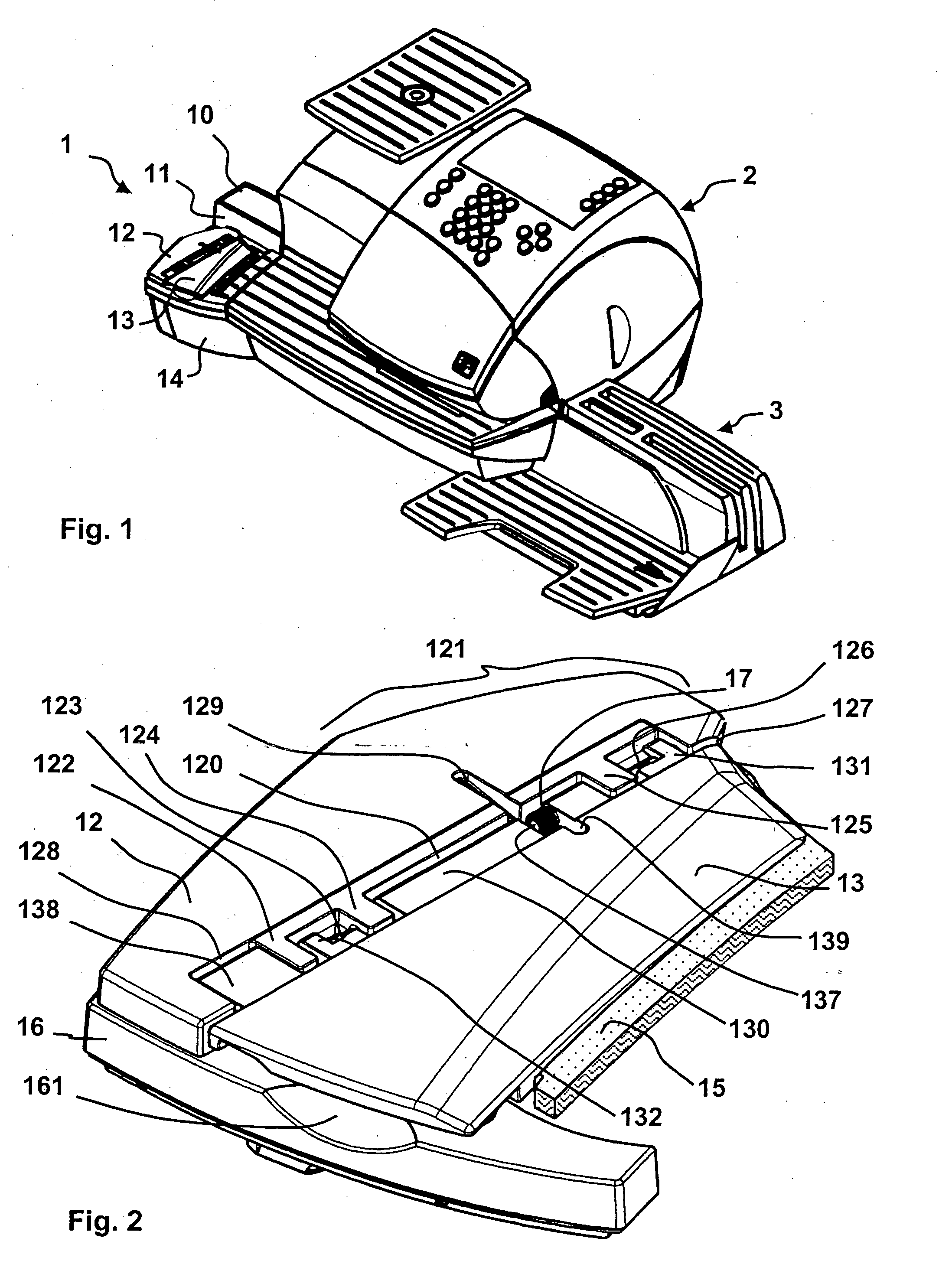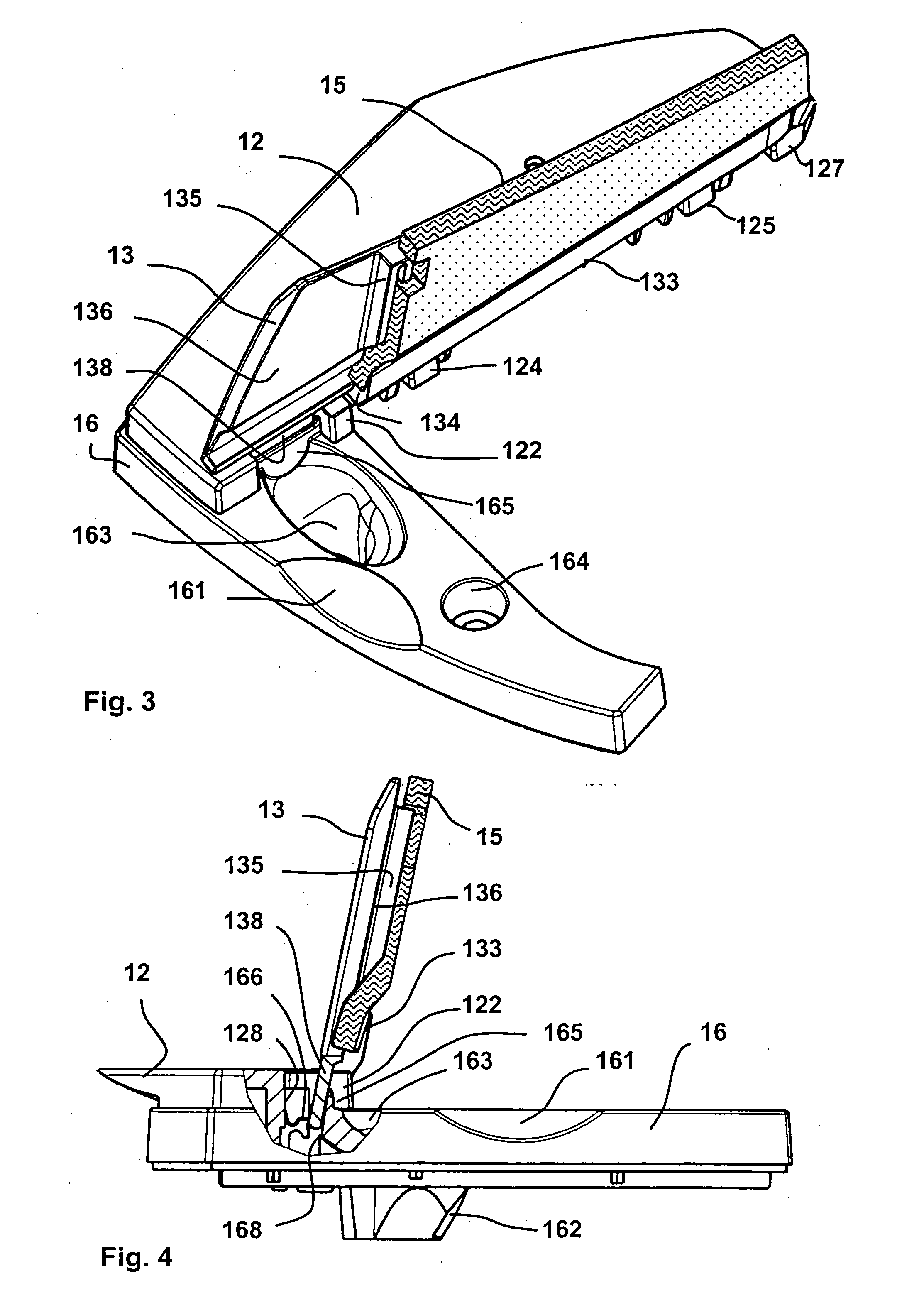Manually operated moistener for items with a water-activated glue
a technology of water-activated glue and moistener, which is applied in the direction of addressing machines, printing, writing accessories, etc., can solve the problems of affecting the cleaning cycle, affecting the actuation of the letter closer of the efs and ultimail® franking machines commercially available from francotyp, and affecting the maintenance of the moistener. , to achieve the effect of improving the maintenance, facilitating the cleaning of such a manual moistener, and
- Summary
- Abstract
- Description
- Claims
- Application Information
AI Technical Summary
Benefits of technology
Problems solved by technology
Method used
Image
Examples
Embodiment Construction
[0033]FIG. 1 is a perspective view of a system with a manual moistener 1, a franking machine 2 and a tray 3, the manually operated moistener 1 being upstream from the franking machine 2 in terms of the mail flow. The operation ensues with a slanted placement of a mail item on the manual moistener 1 with its flap away from the vertical letter placement wall 11. The front part of the flap, lying beneath the envelope body, is shifted against the sharp-edged, acute-angled front side of a blade 12. If the flap of the letter hooks on the blade 12, the operator notices a marked resistance, the flap is caught and, upon further shifting, the letter can be rotated into the blade 12 parallel to the vertical letter placement wall 11. The blade 12 does not extend upstream in terms of the mail flow over the region that is defined by the beginning of a surface of the upper part 10 and the vertical letter placement wall 11. A moistener rocker 13 disposed following the blade 12 wets the flap with mo...
PUM
| Property | Measurement | Unit |
|---|---|---|
| distance | aaaaa | aaaaa |
| force | aaaaa | aaaaa |
| width | aaaaa | aaaaa |
Abstract
Description
Claims
Application Information
 Login to View More
Login to View More - R&D
- Intellectual Property
- Life Sciences
- Materials
- Tech Scout
- Unparalleled Data Quality
- Higher Quality Content
- 60% Fewer Hallucinations
Browse by: Latest US Patents, China's latest patents, Technical Efficacy Thesaurus, Application Domain, Technology Topic, Popular Technical Reports.
© 2025 PatSnap. All rights reserved.Legal|Privacy policy|Modern Slavery Act Transparency Statement|Sitemap|About US| Contact US: help@patsnap.com



